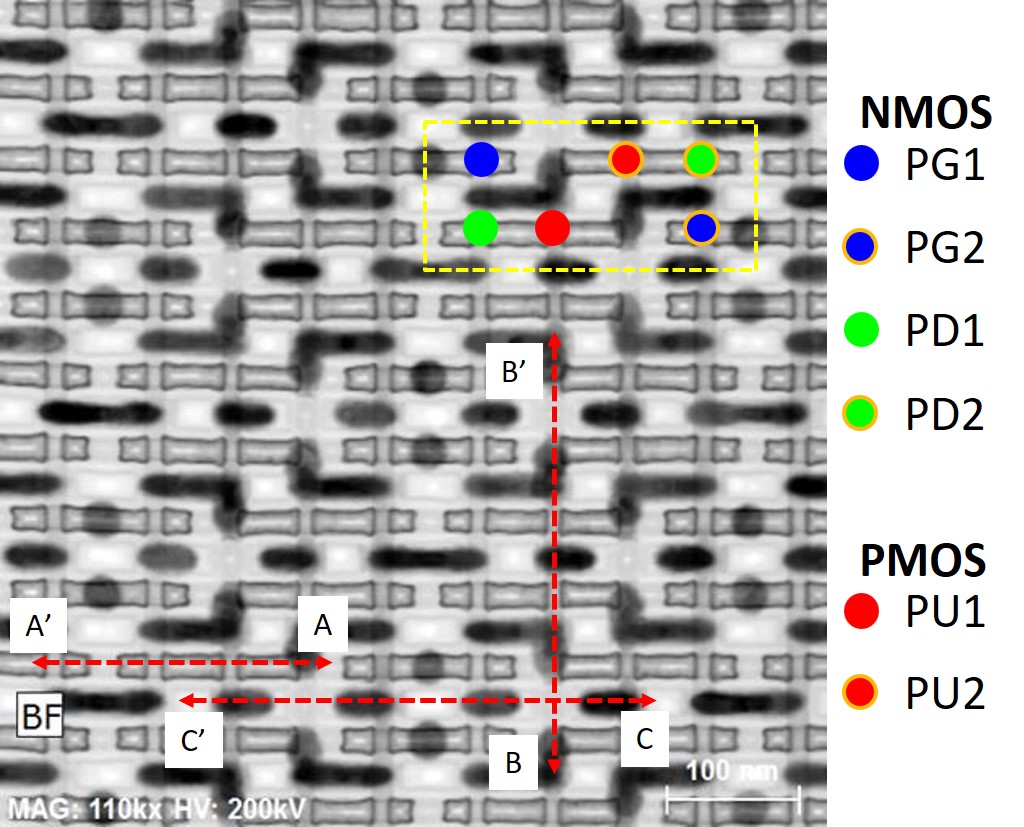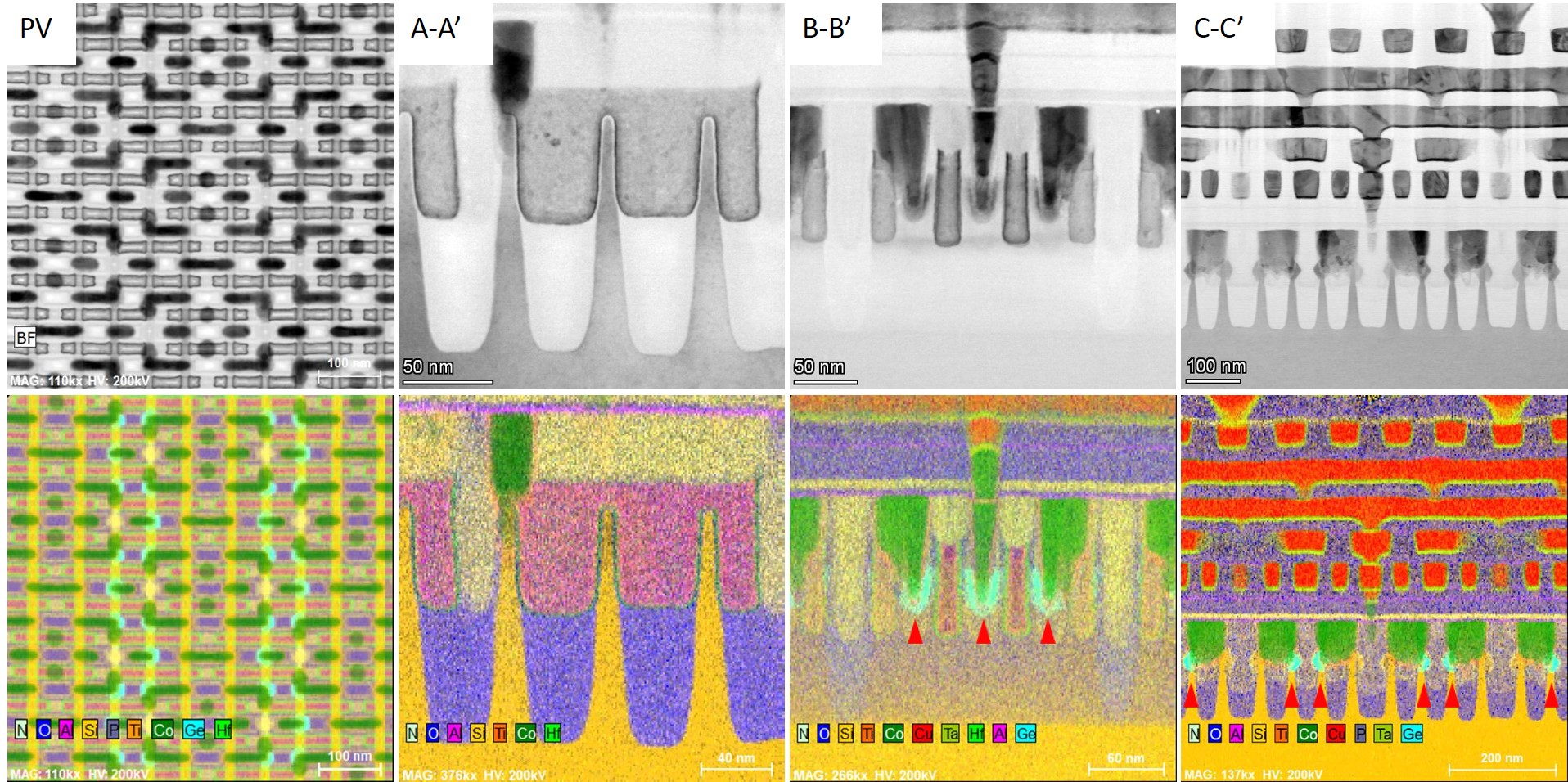
TEM with high spacial resolution has been widely utilized to analyze advanced chips.
The sample is Samsung cellphone’s AP, purchased from the market, and the chip is fabricated by Samsung 5 nm technology.
The target of interest for TEM analysis is 6T SRAM.
This image shows PV TEM result of 5 nm technology node 6T SRAM.
One 6T SRAM cell is composed of four NMOSs and two PMOSs, and one of cells is outlined by the yellow-dotted rectangle, where individual transistor is marked by circles with different colors.

PV TEM image together with three cross-sectional TEM (XTEM) images of 5 nm technology node 6T SRAM cut along with A’A (on gate), B’B (along P-fin), and C’C (on SiGe & SiP), respectively.
The cut directions are exhibited in the previous image.
Their EDS mapping are shown in the lower column, accordingly.
For easy identification, SiGe are marked by the red triangles.
| Application process | Exynos 7420 14 nm node |
Exynos 8895 10 nm node |
Exynos 9630 8 nm node |
Exynos 2100 5 nm node |
|---|---|---|---|---|
| Length (nm) | 467.1 | 382.2 | 384.9 | 244.9 |
| Width (nm) | 168.8 | 129.9 | 126.5 | 110.2 |
| Area (nm2) | 78,846 | 49,648 | 48,672 | 26,975 |
| Fin height (nm) | 42.0 | 48.6 | 51.6 | 54.6 |
| Fin width (nm) | 8.5 | 5.9 | 5.6 | 8.2 |
| Fin pitch (nm) | 177.6 | 136.5 | 136.4 | 72.9 |
| Gate width (nm) | 33.4 | 22.5 | 19.7 | 18.0 |
Critical dimension (CD) comparisons among different technology nodes (14 nm, 10 nm, 8 nm, and 5 nm) from Samsung fabrication technology.
Please note the umbers shown in this table are acquired by MSS TEM/STEM results taken only at 6T SRAM areas.
 TECHNOLOGY INNOVATIONS
TECHNOLOGY INNOVATIONS